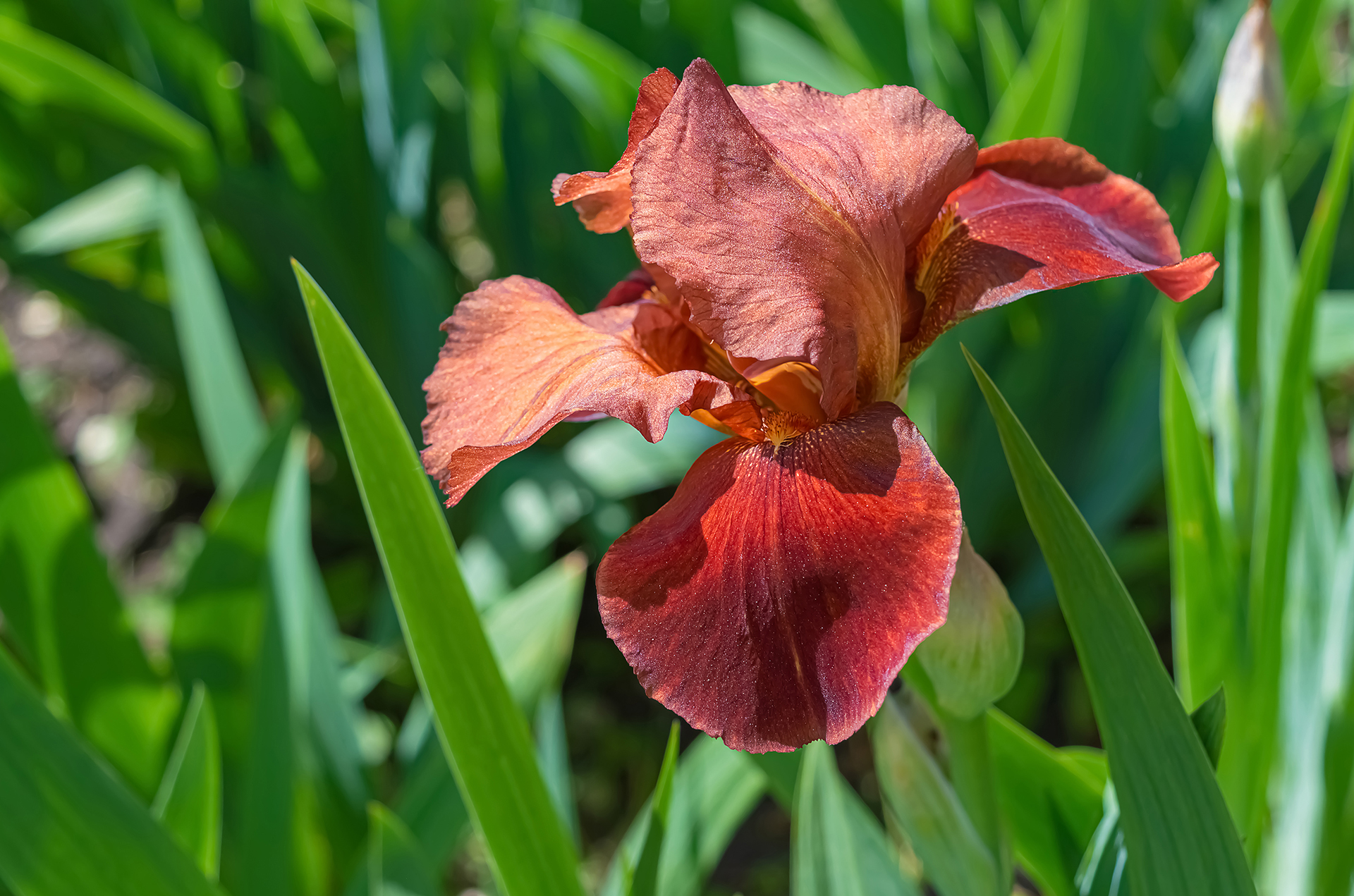How to split irises – to keep them blooming and healthy
Discover how to split irises that have become congested to maximize the flowers in your backyard


To keep them healthy and flowering well it’s important to know how to split irises. In the course of time irises can become congested, which means fewer blooms in the yard.
The remedy to this tendency is to split irises and transplant them – and this has the added bonus that you’ll end up with additional garden plants.
If you’re familiar with how to grow irises, you’ll be aware that irises are available as bulbs and as rhizomes. The latter can be divided, and here we provide the details on how to split bearded rhizomatous irises.
How to split irises
Lifting and dividing iris rhizomes gives them more space. ‘As irises mature, the rhizome produces more rhizomes,’ explains Laura Spencer, master gardener, at PennState Extension. ‘When bloom production slows, about every three to five years, it is necessary to divide by removing and replanting the small rhizomes.’
Find out how to split irises in our guide.
1. Dig up a clump of irises
Begin by digging up a clump of irises that’s become congested using a spade or a fork. It’s very important to work carefully so that the rhizomes are not spiked by a fork if you’re digging them up with one of these.
2. Split the iris rhizomes
With the clump of irises lifted from the ground, pull the rhizomes apart with your hands. It should be easy to separate them, but you can use a sharp knife if necessary.
A piece of young rhizome should be up to 6in (15cm) in length for tall bearded irises, and smaller for miniature versions, and have a fan of leaves – discard any that don’t along with those with smaller fans. Any rhizomes that look old and dry should also be discarded.
Check the rhizomes for iris borer, too. These larvae cause damage and introduce bacteria. If you find these pests, or a rhizome is soft, smells foul, or is rotting, destroy them. They should never be composted.
3. Trim iris foliage
Trim the leaves of the rhizomes you have retained using a sharp knife. Doing so ensures the plant’s energy goes to establishing roots rather than maintaining leaves. The leaves should be cut back so they extend around 6in (15cm) above the rhizome.
Hold each rhizome in your hand between thumb and forefinger and trim roots that extend past your hand, too.
4. Replant iris rhizomes
The divided healthy rhizomes can be replanted. For each, dig a hole that can accommodate both the rhizome and its roots. The plants should be around 12 to 18in (30 to 46cm) apart with taller iris varieties further apart than dwarf versions.
Bear in mind that iris rhizomes should not be too deep. ‘The rhizome should be placed at soil surface on heavy soils, but a little below the surface on light sandy soils, as they will work their way back to the surface,’ advises The Royal Horticultural Society (RHS).
However, it is important to push the rhizomes into the hole so they are well bedded in.
Can you divide iris anytime?
Plan to split irises about six weeks after they have flowered. This way they will grow ready for the next season before they become dormant for the winter. ‘Avoid dividing during winter when irises are trying to survive on stored energy in their rhizomes,’ says Laura Spencer.
How long can iris rhizomes stay out of the ground?
Iris rhizomes can stay out of the ground for a little while if you aren’t able to replant them straightaway – or you want to pass them on to a gardening friend or relative. ‘It will not damage the prepared rhizomes to remain out of the ground for two weeks,’ say the experts at Michigan State University Extension.
Sign up to the Homes & Gardens newsletter
Design expertise in your inbox – from inspiring decorating ideas and beautiful celebrity homes to practical gardening advice and shopping round-ups.

Sarah is a freelance journalist and editor. Previously executive editor of Ideal Home, she’s specialized in interiors, property and gardens for over 20 years, and covers interior design, house design, gardens, and cleaning and organizing a home for Homes & Gardens. She’s written for websites, including Houzz, Channel 4’s flagship website, 4Homes, and Future’s T3; national newspapers, including The Guardian; and magazines including Future’s Country Homes & Interiors, Homebuilding & Renovating, Period Living, and Style at Home, as well as House Beautiful, Good Homes, Grand Designs, Homes & Antiques, LandLove and The English Home among others. It’s no big surprise that she likes to put what she writes about into practice, and is a serial house renovator.
-
 These are the 6 must-have colors to decorate with in April 2025
These are the 6 must-have colors to decorate with in April 2025What do retro-inspired yellows and beautiful blues all have in common? They're on our hot list for the season ahead
By Sophia Pouget de St Victor Published
-
 Plants never to grow next to fruit trees
Plants never to grow next to fruit treesExpert advice on which plants to keep away from fruit trees to encourage a healthy harvest
By Jacky Parker Published